-
 Bitcoin
Bitcoin $105,734.0170
-1.51% -
 Ethereum
Ethereum $2,414.7328
-3.26% -
 Tether USDt
Tether USDt $1.0002
0.00% -
 XRP
XRP $2.1748
-2.62% -
 BNB
BNB $647.5663
-1.72% -
 Solana
Solana $148.1710
-3.81% -
 USDC
USDC $0.9999
-0.01% -
 TRON
TRON $0.2799
-0.02% -
 Dogecoin
Dogecoin $0.1586
-4.17% -
 Cardano
Cardano $0.5440
-5.03% -
 Hyperliquid
Hyperliquid $37.0680
-6.59% -
 Bitcoin Cash
Bitcoin Cash $501.2052
-4.01% -
 Sui
Sui $2.6846
-3.47% -
 Chainlink
Chainlink $12.8488
-3.38% -
 UNUS SED LEO
UNUS SED LEO $8.9480
-1.51% -
 Avalanche
Avalanche $17.2059
-3.87% -
 Stellar
Stellar $0.2270
-4.75% -
 Toncoin
Toncoin $2.7889
-3.93% -
 Shiba Inu
Shiba Inu $0.0...01126
-1.76% -
 Litecoin
Litecoin $83.6893
-3.36% -
 Hedera
Hedera $0.1445
-4.49% -
 Monero
Monero $312.4014
-2.58% -
 Dai
Dai $1.0000
0.00% -
 Ethena USDe
Ethena USDe $1.0001
-0.01% -
 Polkadot
Polkadot $3.2920
-3.32% -
 Bitget Token
Bitget Token $4.4629
-1.81% -
 Uniswap
Uniswap $6.5386
-8.42% -
 Aave
Aave $260.3780
-6.01% -
 Pepe
Pepe $0.0...09308
-4.54% -
 Pi
Pi $0.4864
-3.04%
How to switch between different blockchain networks in Rabby Wallet?
Rabby Wallet allows easy switching between blockchain networks like Ethereum and Polygon; tap the network indicator, select a new network, and verify the switch.
Apr 07, 2025 at 04:42 am

How to Switch Between Different Blockchain Networks in Rabby Wallet?
Rabby Wallet is a versatile multi-chain wallet that supports various blockchain networks, allowing users to seamlessly switch between them to manage their digital assets efficiently. This guide will walk you through the process of switching between different blockchain networks within Rabby Wallet, ensuring you can access and manage your cryptocurrencies with ease.
Understanding Rabby Wallet's Multi-Chain Support
Rabby Wallet is designed to support a wide range of blockchain networks, including but not limited to Ethereum, Binance Smart Chain, Polygon, and more. Each network has its own unique set of features and tokens, which can be managed directly within the wallet. Understanding how to navigate between these networks is crucial for users who hold assets across multiple blockchains.
Accessing the Network Switcher
To begin switching between different blockchain networks in Rabby Wallet, you first need to access the network switcher. Here’s how you can do it:
- Open Rabby Wallet on your device.
- Navigate to the main dashboard where you can see your assets and recent transactions.
- Look for the network indicator at the top of the screen. This usually displays the current network you are connected to, such as "Ethereum" or "BSC".
- Tap on the network indicator to open the network switcher menu.
Selecting a New Blockchain Network
Once you have accessed the network switcher menu, you can select a new blockchain network to switch to. Here are the steps to follow:
- Scroll through the list of available networks. Rabby Wallet typically lists networks like Ethereum, Binance Smart Chain, Polygon, and others.
- Tap on the desired network to select it. For example, if you want to switch to Polygon, tap on "Polygon".
- Wait for the wallet to connect to the new network. This may take a few moments as the wallet syncs with the new blockchain.
Verifying the Network Switch
After selecting a new network, it’s important to verify that the switch was successful. Here’s how you can do that:
- Check the network indicator at the top of the screen again. It should now display the name of the new network you selected.
- Review your asset list to ensure that the tokens and balances displayed are consistent with the new network. For instance, if you switched to Polygon, you should see your Polygon-based tokens.
- Perform a test transaction if you want to be absolutely sure. Send a small amount of the native token (like MATIC for Polygon) to another address and confirm that the transaction goes through on the new network.
Managing Assets on Different Networks
Once you have successfully switched to a new network, you can manage your assets on that blockchain. Here’s how you can do that:
- View your assets by scrolling through the asset list on the main dashboard. Each network will display its own set of tokens.
- Send and receive tokens by tapping on a specific token and selecting the "Send" or "Receive" option. Follow the on-screen instructions to complete the transaction.
- Add custom tokens if they are not automatically detected by the wallet. Tap on "Add Token" and enter the token’s contract address, symbol, and decimals.
Troubleshooting Common Issues
Switching between networks can sometimes lead to issues. Here are some common problems and how to resolve them:
- Network Not Appearing: If a network you expect to see is not listed, ensure that your Rabby Wallet app is up to date. Sometimes, new networks are added in updates.
- Connection Issues: If the wallet fails to connect to the new network, check your internet connection and try again. You can also try restarting the app.
- Transaction Failures: If a transaction fails after switching networks, double-check that you are using the correct network and that you have sufficient balance for the transaction fees.
Frequently Asked Questions
Q: Can I switch between networks without losing my assets?
A: Yes, switching between networks in Rabby Wallet does not affect your assets. Your tokens remain safe and are simply displayed according to the network you are currently connected to.
Q: How do I know which network to use for a specific token?
A: Each token is associated with a specific blockchain network. For example, ETH is on the Ethereum network, while BNB is on the Binance Smart Chain. You can usually find this information on the token’s official website or in its documentation.
Q: Is it possible to add a new network that is not listed in Rabby Wallet?
A: Currently, Rabby Wallet supports a predefined list of networks. If a network you need is not listed, you may need to wait for an update that includes it or consider using a different wallet that supports custom network additions.
Q: What should I do if I accidentally send a token to the wrong network?
A: Unfortunately, sending a token to the wrong network usually results in the loss of those funds, as they cannot be retrieved. Always double-check the network before sending any transactions.
Disclaimer:info@kdj.com
The information provided is not trading advice. kdj.com does not assume any responsibility for any investments made based on the information provided in this article. Cryptocurrencies are highly volatile and it is highly recommended that you invest with caution after thorough research!
If you believe that the content used on this website infringes your copyright, please contact us immediately (info@kdj.com) and we will delete it promptly.
- Robert Kiyosaki Still Bullish on Bitcoin: Why $107K is 'Cheap'
- 2025-07-02 20:30:12
- Coinbase, Liquifi, and Crypto M&A: What's the Deal?
- 2025-07-02 21:10:12
- Nexo Drives into Crypto-Golf: A Digital Wealth Play on the DP World Tour
- 2025-07-02 21:10:12
- Crypto Down in July 2025? Decoding the Market's Mixed Signals
- 2025-07-02 21:30:12
- ETF Buzz, Crypto Climbs, and Token Surge: What's Hot in the Crypto World?
- 2025-07-02 21:35:12
- Asian Paints Under Scrutiny: CCI Probe and Market Reaction
- 2025-07-02 21:40:13
Related knowledge

What is "rent" on Solana and how does it affect my Phantom wallet?
Jul 02,2025 at 08:35pm
Understanding 'Rent' on SolanaIn the context of Solana, the term 'rent' refers to a storage fee that users pay for maintaining data on the blockchain. Unlike Ethereum, where storage costs are paid once via gas fees during contract deployment, Solana implements a recurring cost model to ensure efficient usage of network resources. This means that any acc...
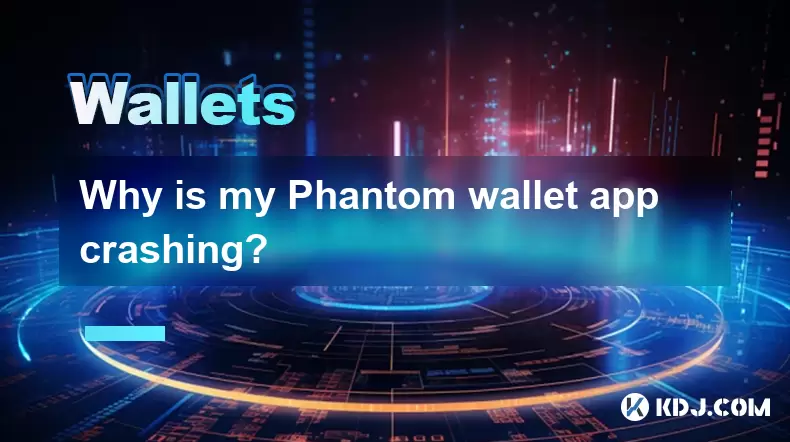
Why is my Phantom wallet app crashing?
Jul 02,2025 at 07:35pm
Understanding Phantom Wallet App CrashesIf you're experiencing issues with the Phantom wallet app crashing, you're not alone. Many users have reported similar problems, especially during high network activity or after recent updates. Phantom is a popular Solana-based wallet that allows users to store, send, and receive SOL tokens as well as interact wit...
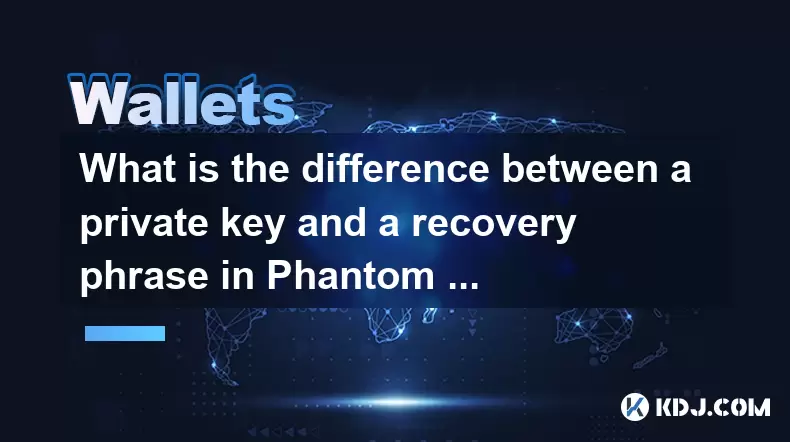
What is the difference between a private key and a recovery phrase in Phantom wallet?
Jul 02,2025 at 09:57am
Understanding the Basics of Phantom WalletPhantom wallet is a non-custodial digital wallet primarily used for interacting with the Solana blockchain. It allows users to store, send, and receive SOL tokens and other digital assets like NFTs. Non-custodial means that the user retains full control over their private keys and recovery phrases. Understanding...
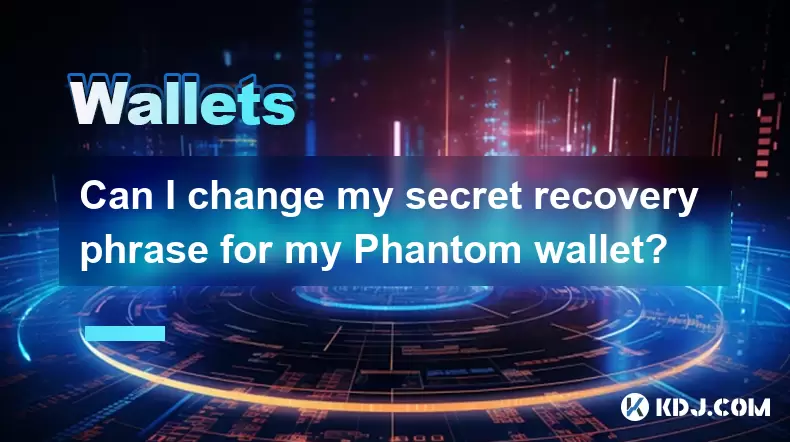
Can I change my secret recovery phrase for my Phantom wallet?
Jul 02,2025 at 12:07pm
Understanding the Role of a Secret Recovery PhraseThe secret recovery phrase, often referred to as a seed phrase, is a critical component in managing cryptocurrency wallets like Phantom. It serves as a backup mechanism that allows users to recover their wallet and associated assets if they lose access to their device or password. Typically, this phrase ...
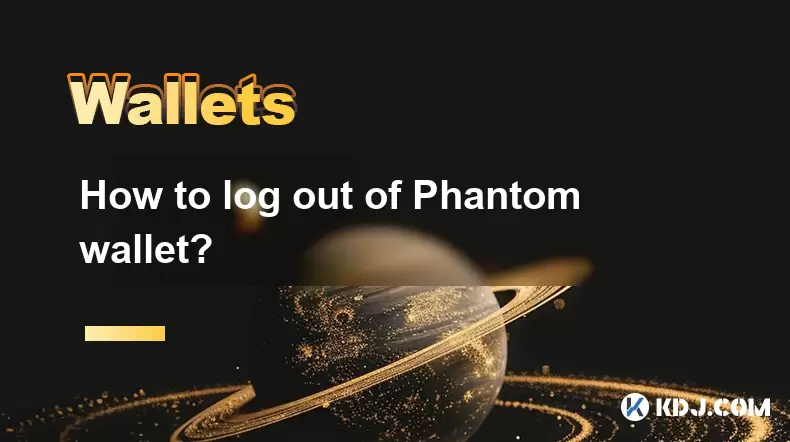
How to log out of Phantom wallet?
Jul 02,2025 at 05:28pm
What Is Phantom Wallet?Phantom wallet is a popular non-custodial cryptocurrency wallet designed primarily for the Solana blockchain, offering users the ability to store, send, and receive SOL and SPL tokens. It also supports integration with decentralized applications (dApps) and allows users to participate in staking, governance, and NFT trading. Being...
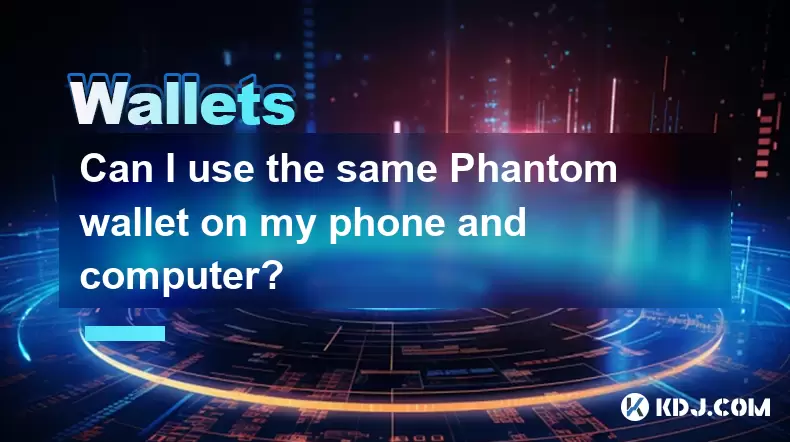
Can I use the same Phantom wallet on my phone and computer?
Jul 02,2025 at 10:04am
Phantom Wallet: Cross-Device CompatibilityPhantom wallet is a non-custodial cryptocurrency wallet designed primarily for interacting with the Solana blockchain. It supports both browser extensions and mobile applications, making it versatile for users who want to manage their digital assets across multiple devices. One of the most common questions among...

What is "rent" on Solana and how does it affect my Phantom wallet?
Jul 02,2025 at 08:35pm
Understanding 'Rent' on SolanaIn the context of Solana, the term 'rent' refers to a storage fee that users pay for maintaining data on the blockchain. Unlike Ethereum, where storage costs are paid once via gas fees during contract deployment, Solana implements a recurring cost model to ensure efficient usage of network resources. This means that any acc...

Why is my Phantom wallet app crashing?
Jul 02,2025 at 07:35pm
Understanding Phantom Wallet App CrashesIf you're experiencing issues with the Phantom wallet app crashing, you're not alone. Many users have reported similar problems, especially during high network activity or after recent updates. Phantom is a popular Solana-based wallet that allows users to store, send, and receive SOL tokens as well as interact wit...

What is the difference between a private key and a recovery phrase in Phantom wallet?
Jul 02,2025 at 09:57am
Understanding the Basics of Phantom WalletPhantom wallet is a non-custodial digital wallet primarily used for interacting with the Solana blockchain. It allows users to store, send, and receive SOL tokens and other digital assets like NFTs. Non-custodial means that the user retains full control over their private keys and recovery phrases. Understanding...

Can I change my secret recovery phrase for my Phantom wallet?
Jul 02,2025 at 12:07pm
Understanding the Role of a Secret Recovery PhraseThe secret recovery phrase, often referred to as a seed phrase, is a critical component in managing cryptocurrency wallets like Phantom. It serves as a backup mechanism that allows users to recover their wallet and associated assets if they lose access to their device or password. Typically, this phrase ...

How to log out of Phantom wallet?
Jul 02,2025 at 05:28pm
What Is Phantom Wallet?Phantom wallet is a popular non-custodial cryptocurrency wallet designed primarily for the Solana blockchain, offering users the ability to store, send, and receive SOL and SPL tokens. It also supports integration with decentralized applications (dApps) and allows users to participate in staking, governance, and NFT trading. Being...

Can I use the same Phantom wallet on my phone and computer?
Jul 02,2025 at 10:04am
Phantom Wallet: Cross-Device CompatibilityPhantom wallet is a non-custodial cryptocurrency wallet designed primarily for interacting with the Solana blockchain. It supports both browser extensions and mobile applications, making it versatile for users who want to manage their digital assets across multiple devices. One of the most common questions among...
See all articles

























































































